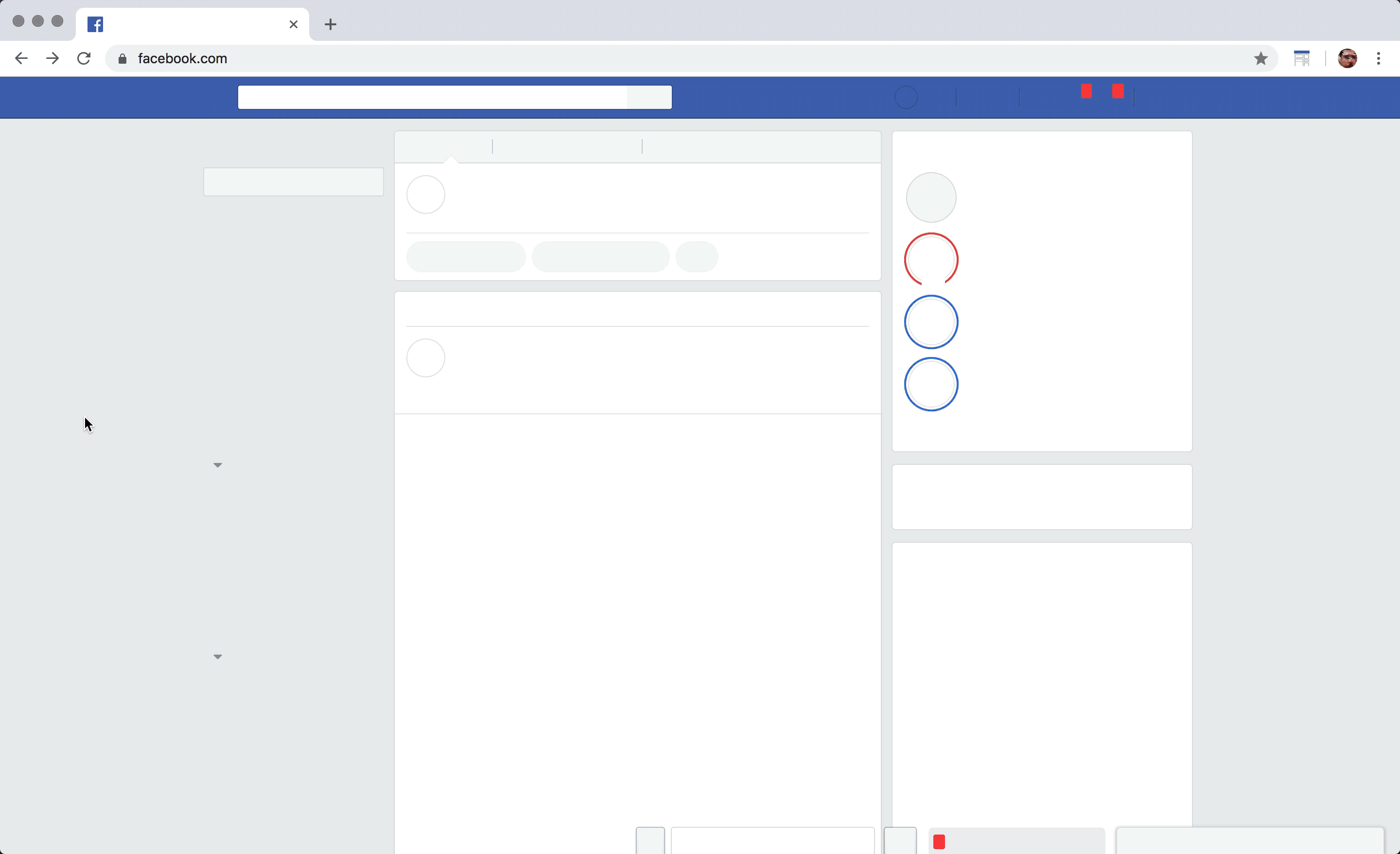
Given the harms that Facebook has wrought on mental health, privacy, and democracy, what would it take to make Facebook “safe?” Is it possible to defuse Facebook’s amplification of anxiety, division, and disinformation while still allowing users to post a status, leave a comment, or confirm a friend? With Safebook, the answer is yes! Safebook is Facebook without the content, a browser extension that hides all images, text, and video across the site. Left behind are the empty containers that frame our experience of social media, the boxes, pop-ups, and drop-downs that enable “likes,” comments, and shares. Yet despite this removal, Facebook remains usable; you can still post a status, scroll the news feed, “watch” a video, Wow a photo, or unfriend a colleague. With the content hidden, can you still find your way around Facebook? If so, what does this reveal about just how ingrained the site’s interface has become? And finally, is complete removal of all content the only way a social media network can be “safe?”
Ben Grosser creates interactive experiences, machines, and systems that examine the cultural, social, and political effects of software. Recent exhibition venues include the Barbican Centre in London, Museum Kesselhaus in Berlin, Museu das Comunicações in Lisbon, and Galerie Charlot in Paris. His works have been featured in The New Yorker, Wired, The Guardian, The Washington Post, El País, Libération and Der Spiegel. The Chicago Tribune called him the “unrivaled king of ominous gibberish.” Slate referred to his work as “creative civil disobedience in the digital age.” Grosser’s artworks are regularly cited in books investigating the cultural effects of technology, including The Age of Surveillance Capitalism, The Metainterface, and Facebook Society, as well as volumes centered on computational art practices such as Electronic Literature, The New Aesthetic and Art, and Digital Art. Grosser is an associate professor of new media at the University of Illinois at Urbana-Champaign, USA.


